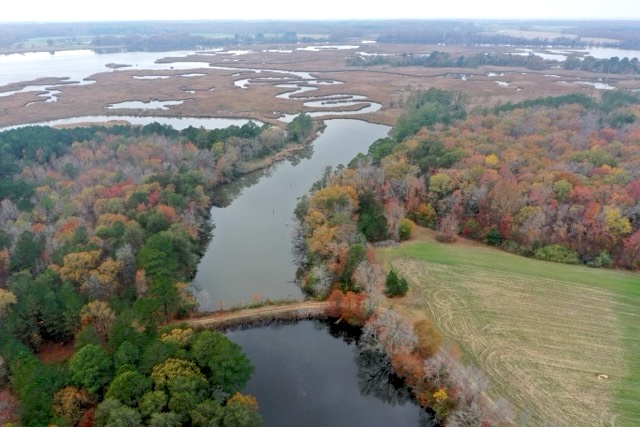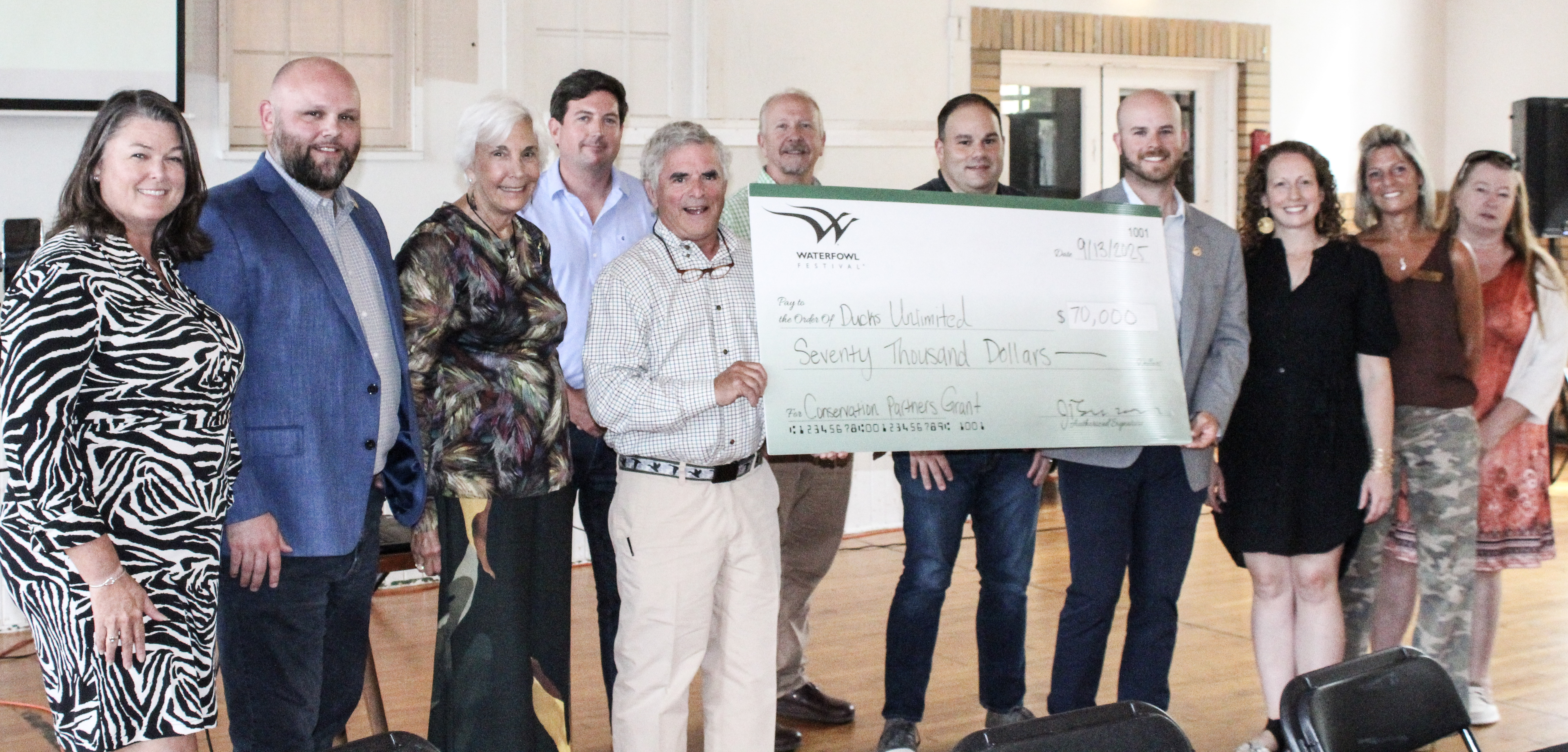Eastern Shore Land Conservancy is delighted to announce the expansion of Jim and Bo Earnest’s conservation easement in Caroline County, which now totals 678 acres, thanks to a partnership between ESLC, Maryland’s Department of Natural Resources, the U.S. Fish and Wildlife Service, and Ducks Unlimited. The expansion was funded through the North American Wetland Conservation Act (NAWCA) and through dedicated Program Open Space dollars—a conservation funding system that was cut dramatically during the 2025 Maryland General Assembly and will likely face similar budget-related threats in the future. The property boasts forests, migratory waterfowl habitat, agricultural fields, scenic value, and more than a mile and a half of Choptank River waterfront, protected with 100-foot forested buffers.
ESLC President & CEO Steve Kline said: “Bo and Jim’s easement protects wildlife, active farmland, and valuable natural resources. The Earnests have supported ESLC’s mission for decades, and they are always thinking of the next step for conservation whether that’s through a healthy forest stewardship plan, a restoration project, or a conservation easement.”
Owned by The Honorable Broughton M. Earnest (Bo) and his brother Jim, the now 678-acre ESLC easement is contiguous to both a 376-acre marsh (which the Earnests conveyed to The Nature Conservancy more than 50 years ago) and the Choptank River’s 30-acre Hog Island where Bo and his wife Ray have lived for more than 50 years. Raised in the D.C. area, Bo and Jim’s late father introduced them to “the magic of waterfowl hunting,” on the Eastern Shore beginning in the early 1950s. This led them to Hog Island, where a surrounding warren of marshes, impoundments, farm fields, and forests continue to welcome owls, terrapins, otters, deer, monarchs, muskrats, and thousands of waterfowl every year. “It is hard to find over 1,000 contiguous acres with over three miles of riverfront on the Choptank (or anywhere else on the Eastern Shore) which has been permanently preserved primarily for the benefit of wildlife, especially the migratory waterfowl which have used this acreage for winter habitat for thousands of years” reflected Bo. “Neither of us can conceive of a more valuable legacy than to perpetuate this environment which has meant so much to our families as well as for the wildlife which call Hog Island home.”
“The Earnests’ passion for conservation is inspiring,” commented ESLC Director of Land Conservation David Satterfield. “Not only have they donated land for public access, but they are exceptional stewards of their property through wildlife habitat protection and restoration efforts for waterfowl and upland birds. The legacy that the Earnests have built on this spectacular piece of land, including the restoration work they are planning, solidifies the Earnests as champions of conservation for the Eastern Shore.”
“ESLC and the landowners of the Choptank River watershed continue to show their commitment to serving as stewards of the River and its surrounding landscape,” said Joanna Ogburn, Principal and Founder of Envision the Choptank. “As a founding partner of Envision the Choptank, ESLC brings their strengths to the 45- member partnership, protecting over 10,000 acres to date within
the watershed. This recently expanded easement will help to maintain agricultural productivity and protect water quality and wildlife habitat for future generations, complementing the efforts of Envision partners all working towards these shared goals.”
To learn more about both donated and funded conservation easements, the Rural Legacy Program, or ESLC’s Program Open Space advocacy, please contact ESLC Director of Land Conservancy David Satterfield at [email protected] or ESLC Director of Land Use & Policy Owen Bailey at [email protected].
Established in 1990, Eastern Shore Land Conservancy’s mission is to conserve, steward, and advocate for the unique rural landscape of Maryland’s Eastern Shore, forever a special place of diverse and abundant natural resources and thriving rural communities.



